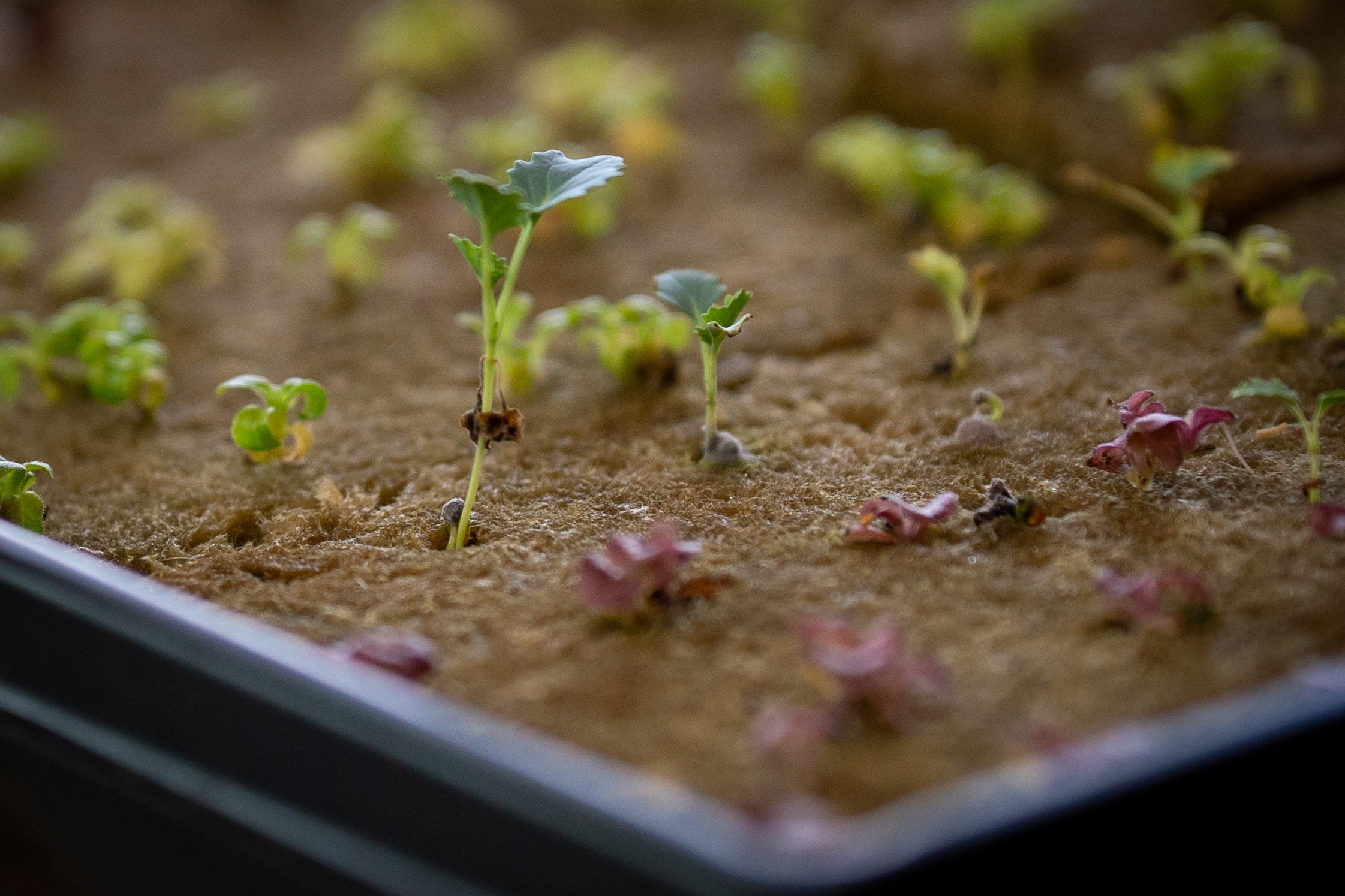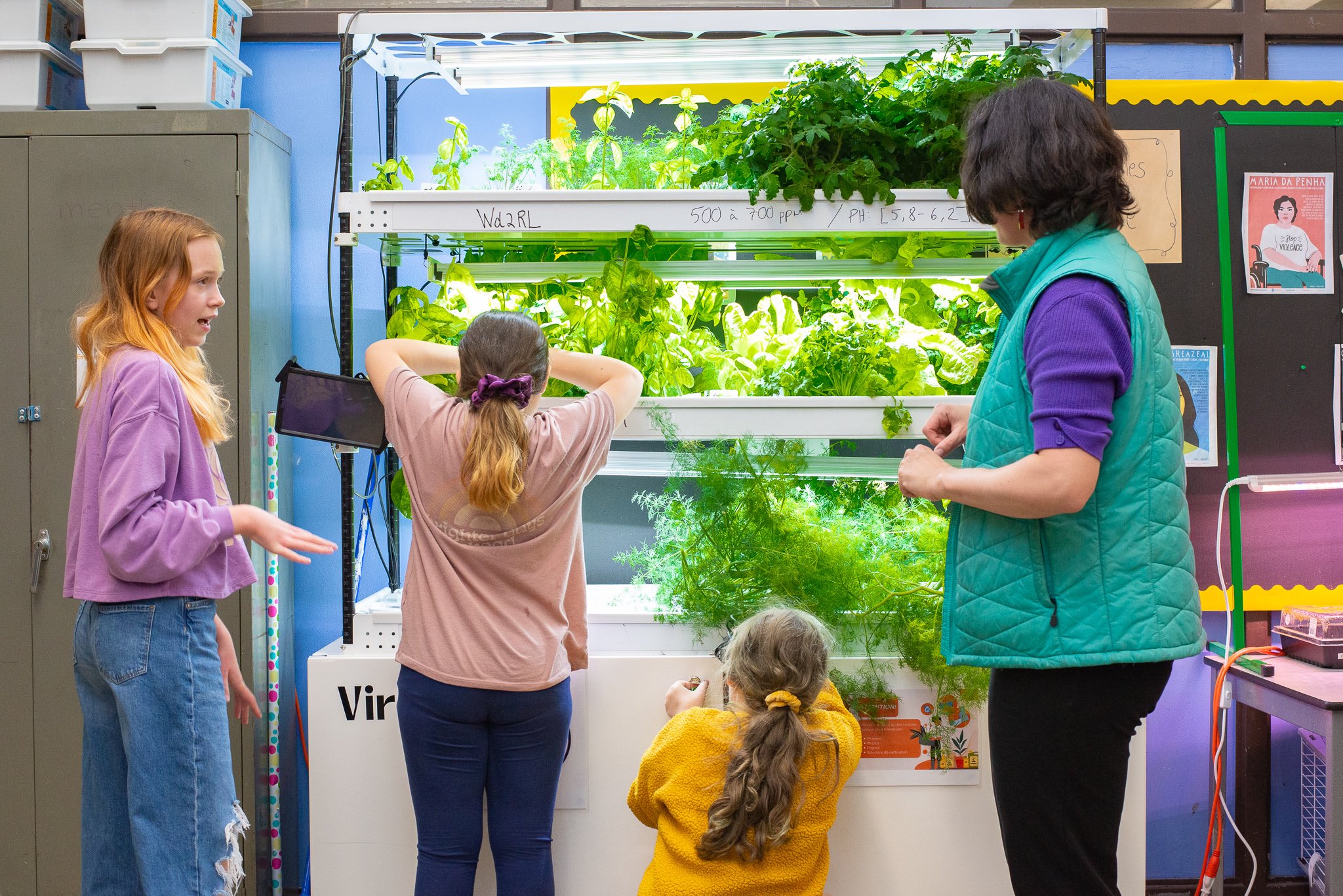Cultivating without soil: the complete guide to hydroponics
In agriculture, hydroponics allows plants to grow without soil. In this growing method, soil is replaced by a substrate that can be used to retain a water and nutrient solution. Hydroponic plants can grow in substrates or soils such as sand, gravel, coconut fiber, pumice, rockwool or agricultural perlite because the minerals plants need are dissolved in water.
This growing method is very popular in places where there is a lack of arable soil or unfavorable climatic conditions, where it can also be combined with a greenhouse. In this article, we will explain everything you need to know about hydroponic gardening!
What is hydroponic gardening?
Hydroponics is a type of gardening that uses water with mineral solutions instead of soil to grow plants, vegetables and fruit. The roots of the plants are not in the soil, but in a substrate or nutrient solution.
In hydroponic gardens, plants need to be watered more than 3 times a day. This can be done manually, but this is usually a fully automated function with pumps and timers.
Because it is a water-based system, gardeners have no soil to dig up or weeds to pull. What's more, water and nutrients can be reused to eliminate waste, which is very natural and good for the environment.
What are the benefits of hydroponics?
There are several advantages associated with hydroponic gardening such as:
You don't need to be an expert farmer to get good results because almost everything in hydroponics is automatically measured and controlled.
Hydroponic gardens are ideal for small spaces or areas that don't get sufficient sunlight.
Because hydroponics doesn't require soil, it saves time and labor.
There is greater control over plant cleaning and hygiene because sterile substrates are used, thus reducing the risk of bacterial or fungal diseases compared to soil culture, where the soil can contain a variety of microorganisms.
The same water can be used for an entire crop production cycle, which lasts about eight weeks depending on the plant variety. However, water and nutrients must be added approximately every two weeks.
By providing each plant directly with the minerals and nutrients it needs, it takes less time to develop and a bountiful harvest is produced.
A hydroponic garden can also contribute to biodiversity in several ways:
By transplanting pollinator plants started in hydroponics to an outdoor garden
By propagating plants through a cutting project
By creating seeds
The location of the hydroponic garden will affect this contribution. If the garden is placed in a closed environment, the vectors that help pollination such as bees, wind, rain, animal fur, etc. are reduced. On the other hand, transplanting plants outdoors after wintering in a vegetable garden will encourage plant reproduction.
How does hydroponics work?
In this type of growing, a substrate such as coconut fiber, peat or rockwool is used instead of soil to hold the plants. Nutrients are dissolved in water and fed to the plants. This resource is very important for this type of cultivation, so the irrigation system and its procedures must be adequate.
The main components of the system are:
The nutrient solution that is pumped into the system
The tank that holds the diluted nutrient solution and water
Irrigation heads and channels built where the substrate is located.
The plants
The pipe used for fertilization
The waste water sink
This cutting-edge agricultural technology makes it possible to produce more crops with less water. What's more, because this technology makes full use of resources and space, it supports sustainable agriculture.
Why choose hydroponics?
In addition to greater space efficiency, here are some other reasons to choose a hydroponic garden:
Consistent production throughout the year;
Crops are more likely to thrive as they are less susceptible to external factors such as extreme weather;
Significant savings in resources, especially with water reuse;
Food is healthier because no pesticides are used.
How to build a hydroponic garden?
To start a hydroponic garden, it's important to place the substrates in a tray to facilitate water retention and the seeding process. Once the seeding and germination process is complete and leaves begin to appear, it's time to transfer the plants to the hydroponic garden. Once transferred, the container is used only for the next production cycle.
The frequency with which nutrients are added depends on the type of hydroponic plant chosen. In addition, the pH of the water must be taken into consideration, as well as the amount of light; whether natural or artificial, as much light as possible must reach the hydroponic garden so that the plants can develop naturally.
What are the 6 types of hydroponics systems?
The various hydroponic systems can be divided into two categories: those in which the roots are in the substrate and those in which the roots are directly in the water.
For roots-in-substrate, this essentially means that a large bag or container is filled with a substrate such as coconut fiber, perlite, etc. The young plants are placed in these bags or containers and then filled with water. The seedlings are placed in these bags and irrigation is usually by drip irrigation.
For roots directly in water, seedlings are planted in a substrate. However, as the roots lengthen, they leave the substrate and grow directly in the nutrient solution. If you pull up a plant in one of these systems, you'll see the roots, but if you look at the base of the stem, you'll also see the substrate.
Roots in substrate
Wick System
The hydroponic wick system is one of the simplest systems because it doesn't require an electric pump or irrigation to deliver nutrients. It also requires only a few materials, such as:
A container with an opening at the bottom,
A special wick in contact with the plant roots,
A nutrient solution.
It's also important to know that this system can be used for a single plant, not a large plantation. It is also recommended for plants that require little water.
Tidal Table System (Flux-Reflux)
In this technique, sometimes called "flood-drain", the trays in which the substrate and plants are placed are temporarily submerged to allow them to absorb the nutrient solution. Once the substrates have sufficiently absorbed the nutrient solution, the solution is drained back into the reservoir.
This technique allows the use of different types of substrates and vegetables. However, it's important to make sure the pump and daily watering schedule are working properly. Because plants transpire (release water), they need more water in the middle of the day when the sun is stronger and less in the evening.
Drip System
This system is similar to drip irrigation in traditional agriculture, except that excess water is recovered and reused. Although this technique uses nutrients more efficiently, it's easier to control pH and nutrient solutions in systems without recirculation.
Roots in water
Nutrient Film Technique
This technique is the most widely used in the hydroponic industry, although materials and systems generally vary. For example, it may be a pumping system using PVC tubing in which the plants are placed to receive nutrients from the nutrient solution that is constantly recirculated through the tubing.
Liquid Culture
The liquid culture system is ideal for small plants such as lettuce and certain herbs. It's one of the simplest and most economical systems available. It is often used in educational activities and classrooms.
Aeroponics
Aeroponics is the technique that uses the least amount of water because the roots are suspended in the air. In this case, the plants receive the nutrient solution through a sprayer and oxygen is drawn from the air. Since they use less water, they also need less nutrients.
The plants are placed in a dark environment and receive the nutrient solution every 2-3 minutes. Although it sounds very practical, this technique is more expensive and not the most recommended for beginners.
Hydroponics in schools
To add greenery to your school and actively engage your students, why not create a school hydroponic garden? The benefits of hydroponics for student learning and development are many.
Vireo has developed a unique educational solution that combines a high-capacity indoor hydroponic vegetable garden with a complementary online platform and personalized support, enabling students to reconnect with nature.




